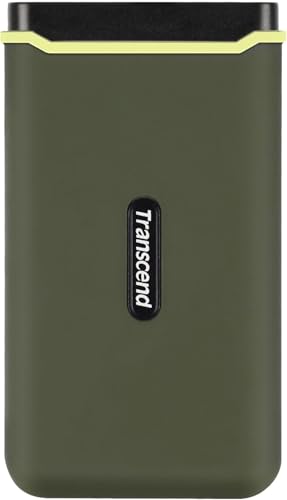Understanding the Basics of Transcend SSDs: What You Need to Know Before Buying
What is an SSD?
An SSD, or Solid State Drive, is a type of storage device that uses flash memory to store data. Unlike traditional hard drives, SSDs have no moving parts, which makes them faster and more reliable. When we think about how we use our devices today—whether it’s for gaming, editing photos, or simply booting up our computers—an SSD can significantly improve performance and speed. Transcend is one of the brands that offers a variety of SSDs, designed for different users and needs.
Why Choose Transcend?
Transcend SSDs are popular for their durability and speed. They come equipped with technologies that enhance data integrity and longevity. This is especially crucial if you plan to store important files or run intensive applications. By choosing a Transcend SSD, we are opting for a device that balances performance, reliability, and affordability, making it a fitting choice for various users.
Key Features to Look For in a Transcend SSD: A Simplified Guide
Form Factor Matters
Transcend SSDs come in different shapes and sizes, mainly 2.5-inch, M.2, and PCIe. It’s essential to know what form factor your device supports. For example, a 2.5-inch SSD is perfect for upgrading older laptops, while M.2 drives are commonly used in newer laptops and desktops for their compact design.
Storage Capacity】
When selecting a Transcend SSD, consider how much storage you need. Options typically range from 120GB to 2TB. For everyday tasks like browsing and document storage, 250GB might suffice. However, for gamers or media professionals dealing with larger files, opting for 1TB or more would be beneficial.
Read and Write Speeds
The read and write speeds of an SSD indicate how quickly it can retrieve and store information. We should look for Transcend models that provide high-speed ratings, particularly for tasks requiring rapid access to large files. A good benchmark is aiming for read speeds above 500MB/s for a noticeable performance boost.
Comparing Different Models: Which Transcend SSD Suits Your Needs?
Entry-Level Choices
If we are new to SSDs and require something basic, the Transcend JetFlash series offers a convenient entry point. These models provide a straightforward upgrade from traditional drives at a lower capacity but are sufficient for basic use like web browsing and office applications.
Mid-Range Options
For users who need a balance of performance and capacity, the Transcend SSD230S is an excellent mid-range option. With capacities up to 1TB and fast read speeds, it caters well to both gamers and professionals alike, providing ample storage with enhanced performance without breaking the bank.
High-Performance Models
Should we be looking for the best in speed and performance, the Transcend MTE series targets users like gamers or creators. These models are designed to handle intensive workloads, offering superior read and write speeds. If running heavy applications is our priority, this would be the ideal choice.
How to Install and Use Your Transcend SSD: Easy Steps for Everyone
Installation Made Simple
Installing a Transcend SSD is typically a straightforward process. Ensure we have the right tools, like a screwdriver, and follow the instructions specific to our device. For laptops, this usually involves removing a panel, inserting the SSD into the compatible slot, and securing it. Once installed, we need to format the drive by going to disk management settings, making it ready to use.
Using Your SSD Efficiently
After the installation, we can start using our new SSD. Ensure to transfer files gradually and keep the drive sufficiently empty for optimal performance. We can also take advantage of cloud storage to prevent overloading. Regularly updating our system and drivers can maximize its efficiency as well.
Maximising Performance: Tips to Get the Most Out of Your Transcend SSD
Keep It Updated
To ensure our Transcend SSD performs at its best, keeping the firmware updated is crucial. Manufacturers like Transcend frequently release updates that improve speed and reliability. Regularly checking the manufacturer’s website can save us from potential issues.
Avoid Full Drives
A general rule of thumb is to keep at least 10-20% of the SSD storage free. This space allows the SSD to manage and write data efficiently, improving overall performance. If we notice our SSD nearing full capacity, it might be time to clean up less important files or invest in additional storage.
Utilize TRIM Support
TRIM is a command that helps SSDs manage space and maintain performance over time. Ensuring our operating system supports TRIM means our SSD will run smoothly and prolong its lifespan. Most modern operating systems include this functionality by default.































